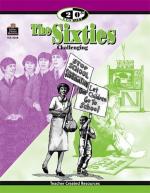|
This section contains 772 words (approx. 3 pages at 300 words per page) |

|
Symbol and Leader.
Martin Luther King, Jr., became the symbol of the civil rights movement after leading the Montgomery bus boycott (1955-1956), which attracted the nation's attention to the growing dissatisfaction of southern blacks with the system of legal segregation. Along with a group of black Baptist preachers he helped form the Southern Christian Leadership Conference (SCLC), and in his books and sermons he laid the foundation of nonviolent direct action as a way of securing for southern blacks their rights guaranteed in the Thirteenth, Fourteenth, and Fifteenth Amendments.
Birmingham.
When the SCLC joined the campaign to desegregate Birmingham, Alabama, in 1963, King's presence attracted the television and news cameras which recorded the shocking violence of the police toward the demonstrators, including children. Those displays of racism aroused the nation and forced the Kennedy administration to introduce a civil rights bill that became the Public Accommodations...
|
This section contains 772 words (approx. 3 pages at 300 words per page) |

|




